Not quite sure what to do with the glut of broad beans (fava beans)? Let me show you how to prepare, cook and even freeze these nutrient packed summer gems!
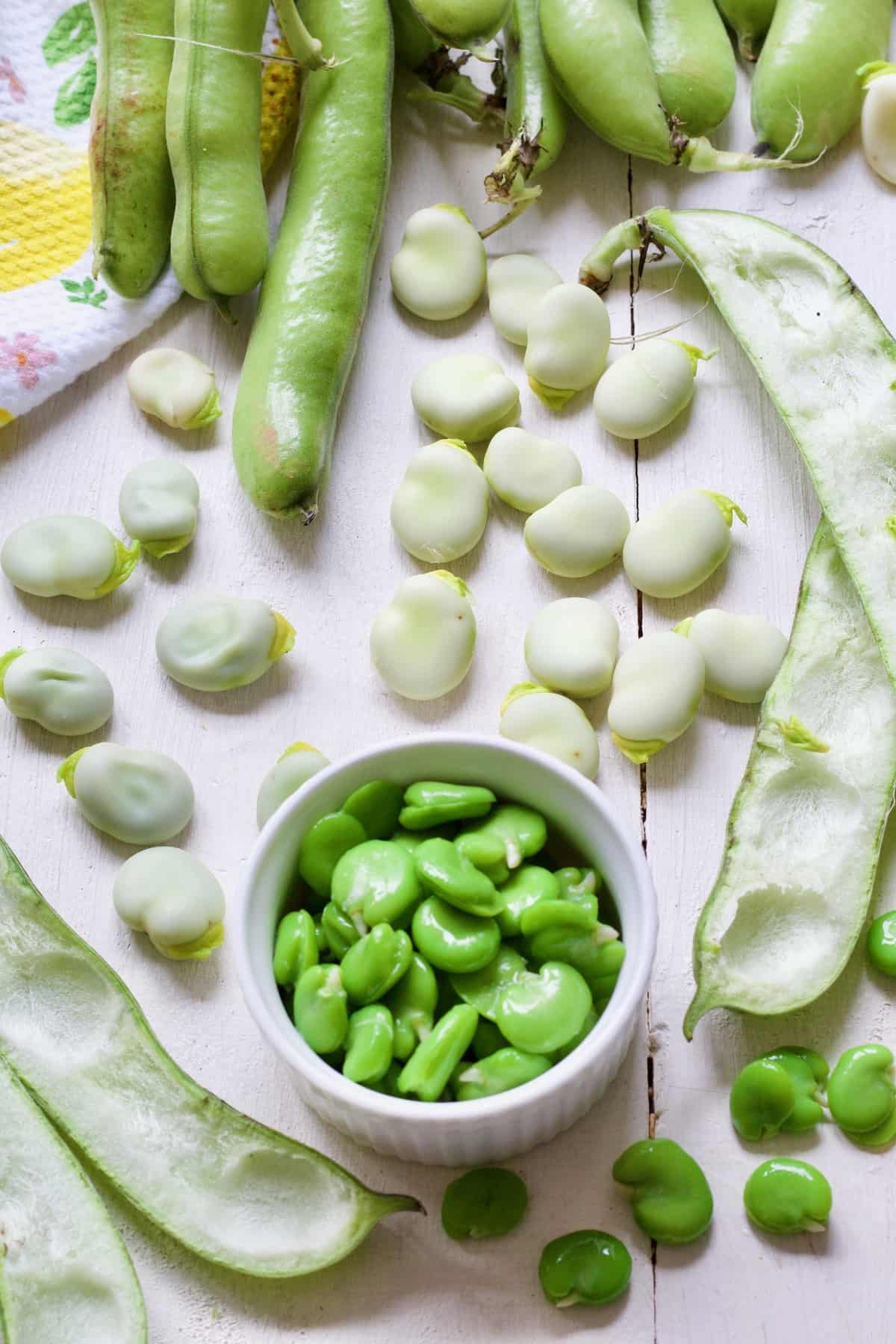
The way you cook broad beans will determine whether you are likely to enjoy them or not.
Eat them simply podded and boiled (especially towards the end of their season) and you will run a mile.
However, if you go to the effort of uncovering the bright green jewell of deliciousness, you will most likely become a forever fan!
Jump to:
What are broad beans
Broad Beans also known as Fava or Faba Beans are members of the legume family.
They are pretty robust and easy to grow in our UK climate and are in season from the end of May/early June all the way up to mid September.
Broad beans hide inside their skins (pods) which are also edible (when young) and early in the season you can try cooking and eating your broad beans whole - pod and a bean, similarly as you would peas.
You can even embark on cooking just the pods as in this recipe for Fried Broad Bean Pods if you want.
Personally, I much prefer enjoying them podded or even double podded as you'll find out below.
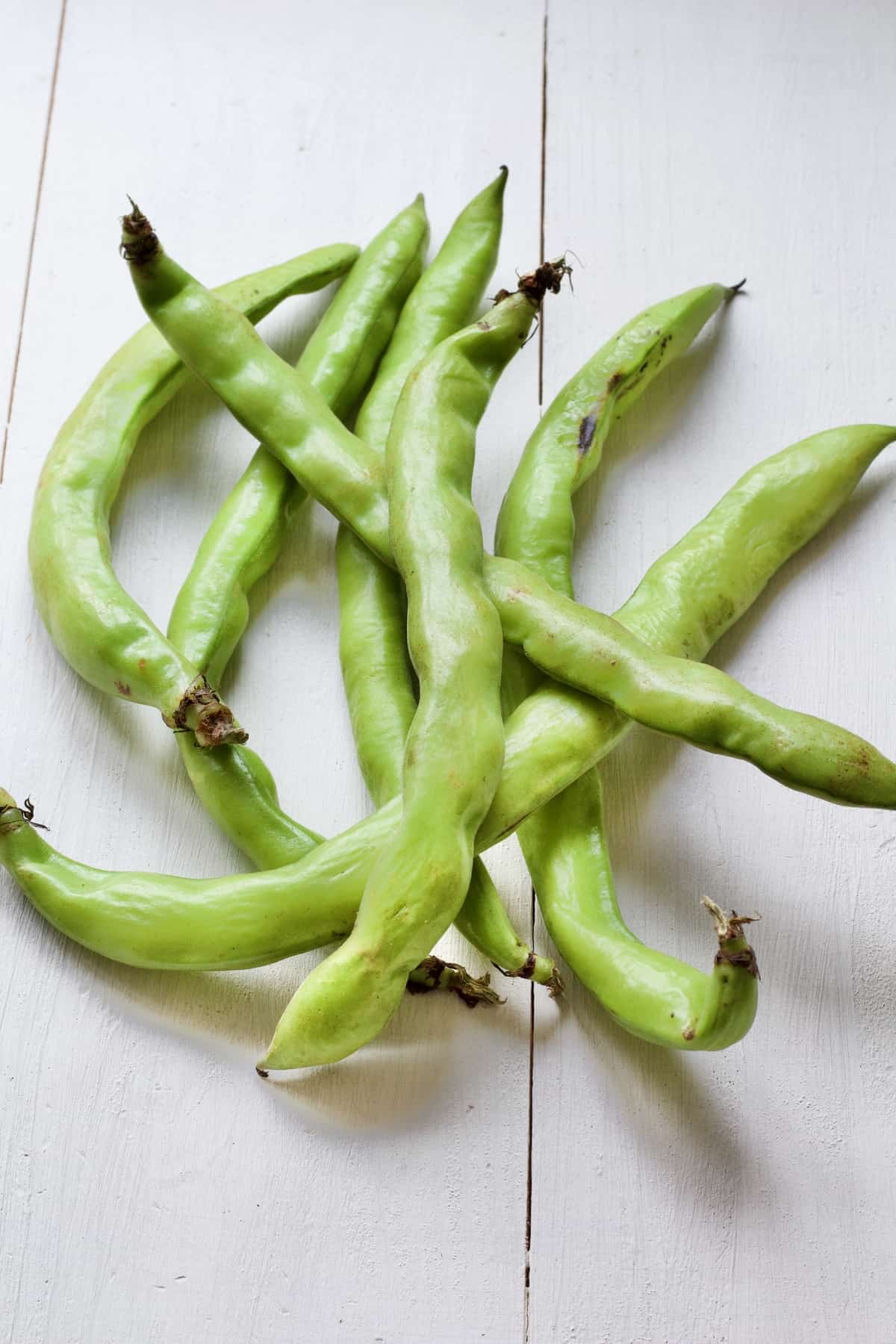
How to prepare broad beans
Firstly, you want to get rid of the outer shell by shelling the broad beans.
There are many different ways of going about it my favourite ones being:
- Snapping the pod in half and opening each half with your fingers to get the beans out.
- Splitting the pod open with the help of your nails, similar to what you would do with the pea pod. Pod will be easier to open this way if you remove the string (that starts at the top of the bean where it used to hang off the plant) first.
I'll let you choose which way suits you best!
Once you got broad beans (fava beans) out of their shells, you are ready to cook them!
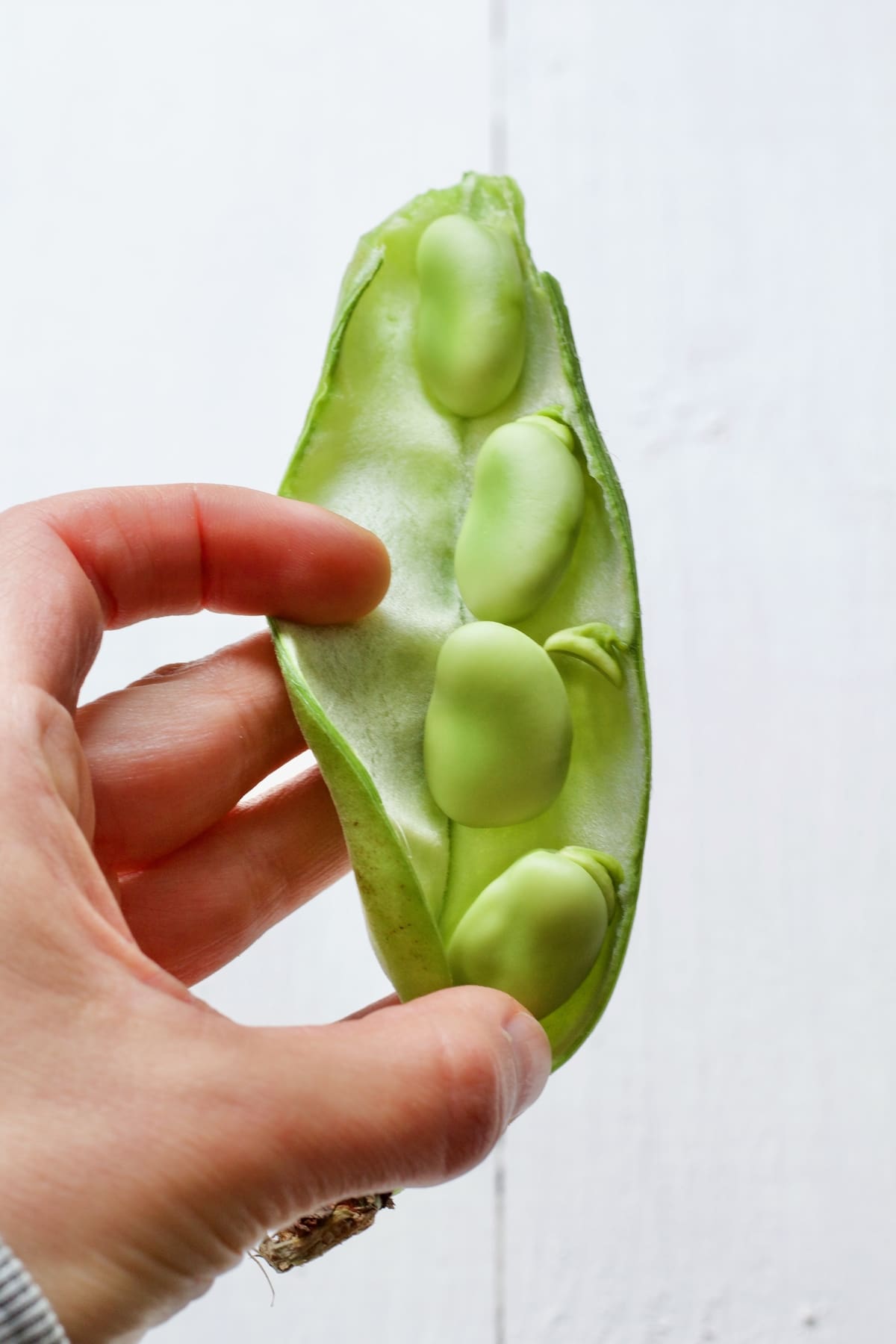
How long to cook broad beans for
Broad beans (fava beans) don't take long to cook at all.
It takes approximately 2-3 minutes depending on their size but I find 2 minutes to be a sweet spot even if you've got quite a mixed batch of beans (different sizes) in one pan.
Blanching broad beans
The best way to cook broad beans (fava beans) is to blanch them.
Blanching is when you cook something (in our case broad beans) in boiling water for a specific time, following by submerging it in icy cold water or alternatively, running under a very cold tap straight after to stop the cooking process.
Blanching also helps to preserve colour as well as nutritional value.
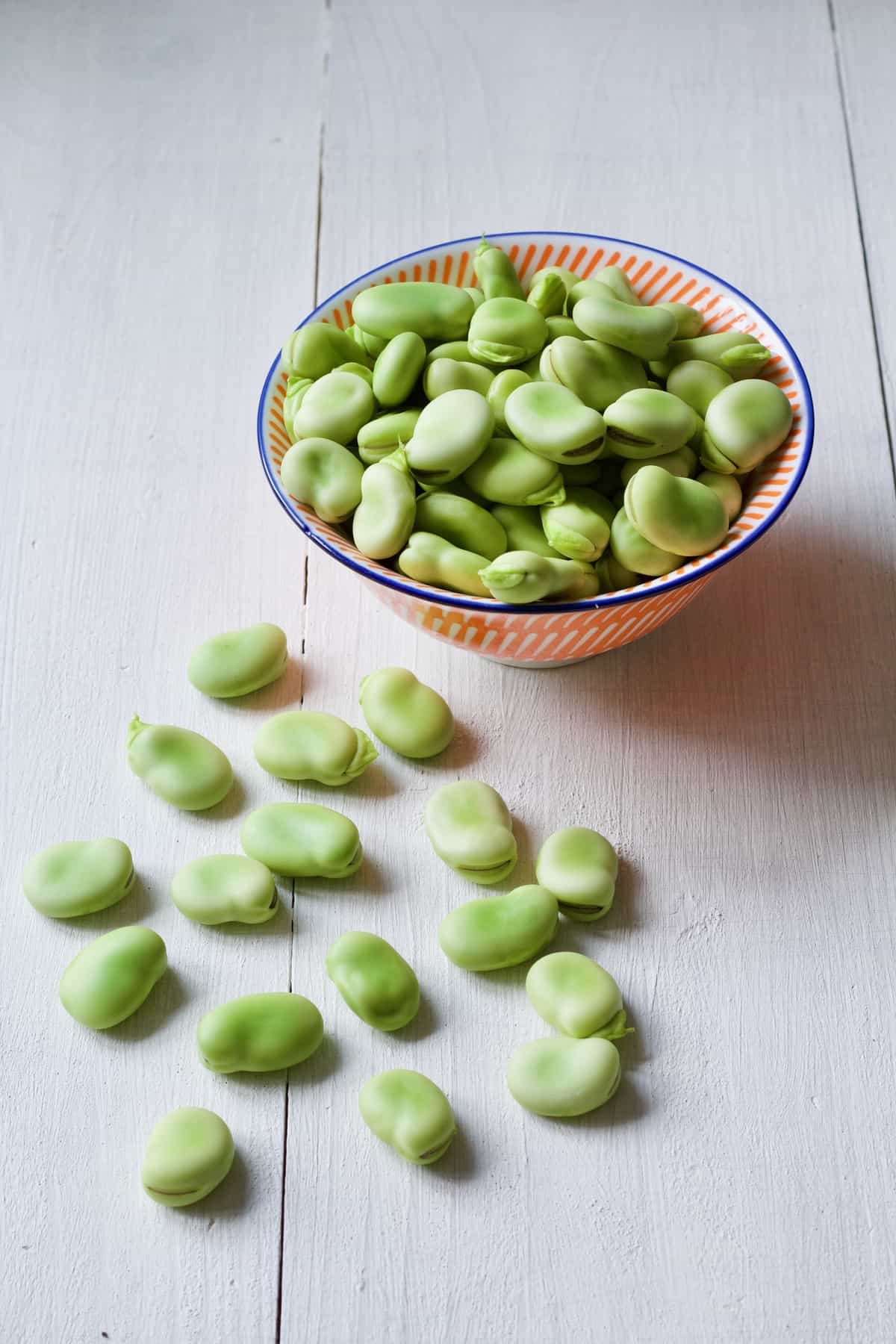
Double podding broad beans
Should you double pod broad beans? In my opinion YES!
Ok, it does take that little bit of extra time and patience but I must say it's quite a calming experience and totally worth it!
Even though you can eat broad beans (fava beans) without double podding and it's absolutely fine to do that (especially early in the season when they are still quite small, young and tender), once you've tried double podded ones, you will not want to go back!
My children would not touch wrinkly looking, slightly rubbery and bitter broad beans before they've been double podded but adore bright green ones.
It's definitely not just visual thing but mainly flavour.
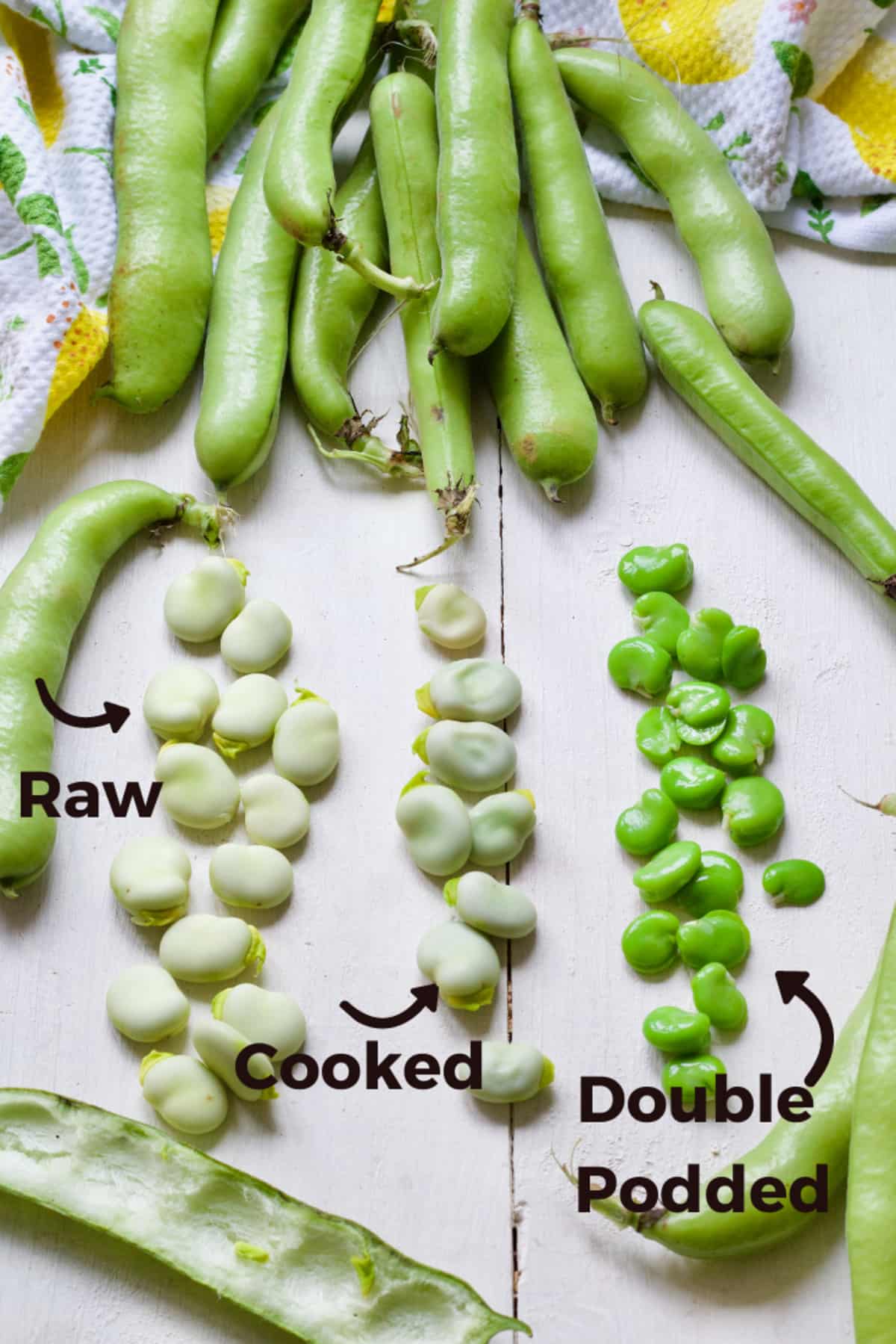
💭 Top Tips
- Don't attempt double podding broad beans before blanching them, it would take you forever. They almost slip out of their skins once blanched.
- Don't go over 3 minutes max cooking time or you'll have an absolute mush. Broad beans taste their best tender but with a slight bite to them.
- Don't skip cooling the beans straight after blanching them. This stops cooking process and preserves both colour and nutritional value.
- Don't skip double-podding, it really is game changer! The outer skin is not particularly palatable in my opinion and actually quite bitter too.
- 1 kg (2.2lb) fresh broad beans in their pods (fava beans) will yield you approximately 250-300g (9-10.5oz) worth of beans. It's usually enough for 4 side dish servings or to add to salad, pasta or rice dishes.
🥡 Storing and freezing
Uncooked broad beans (in their pods) will keep in your veg box in the fridge for up to a week.
I wouldn't recommend shelling them until you're ready to blanch them as once they've been shelled they will start deteriorating pretty quickly if left uncooked.
If you don't have an immediate use for them or are indeed inundated with the huge glut you can easily freeze them (after blanching first) for up to a year.
Cooked broad beans will last in the fridge for approx. 3-5 days.
How to freeze broad beans
To freeze broad beans, I would recommend blanching them first as this way they will not only keep their colour and nutritional value but will also keep in the freezer for longer.
Once blanched and cooled, make sure to dry broad beans well which will help preventing freezer burn. Don't double pod them at this stage as the pod will help protect them.
I like to freeze my broad beans in single layer on a small baking sheet (one that fits in my freezer) before transferring them into large, freezer friendly bag.
Bear in mind that doing it this way you might need to do it in batches but they do freeze very quickly and you won't end up with a bag of broad beans that are clumped together.
To defrost broad beans simply submerge them in a pot of boiling water for one minute and cool immediately in icy water or under cold tuning tap. Proceed with double podding.
Alternatively, you could let them defrost in a bowl on your kitchen counter for about an hour before you intend to use them. Once defrosted double pod them and you're ready to go!
Cooking broad beans - step-by-step
One - Prepare the broad beans for cooking by shelling them (getting rid of the outer skin/shell/pod).
Two - Bring a medium pot of lightly salted water to boil.
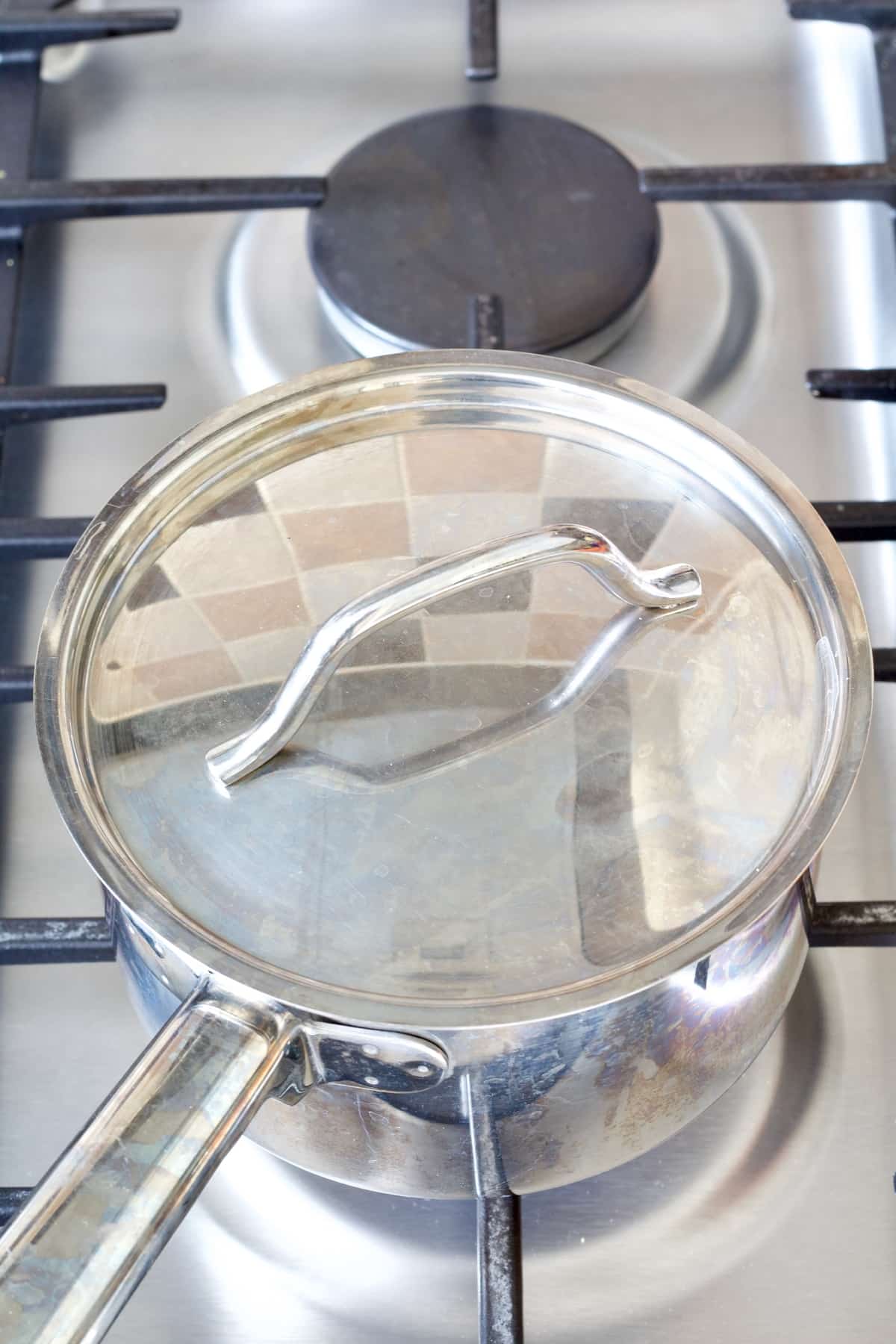
Three - Add shelled beans to boiling water and blanch for anything between 2-3 minutes.
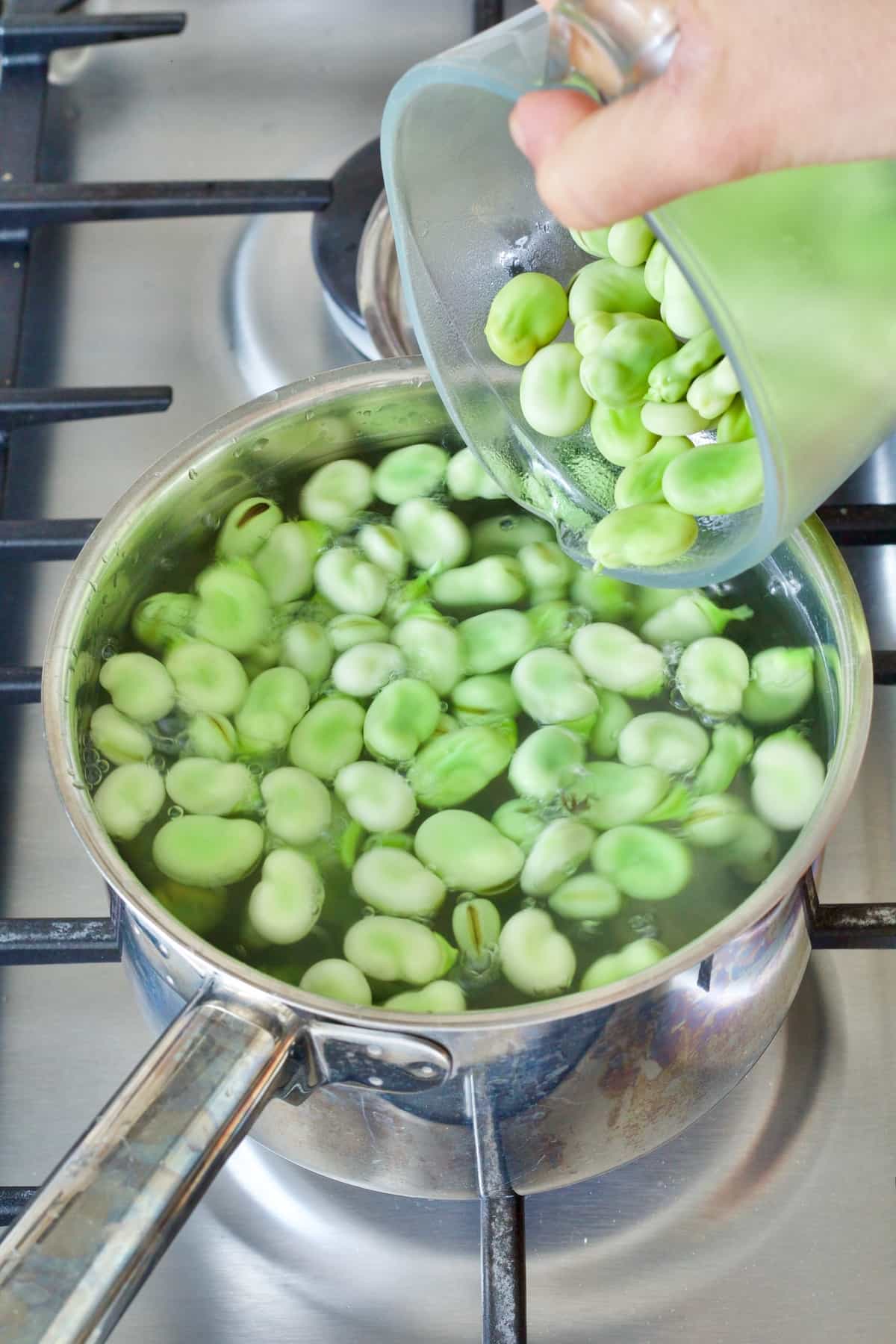
Four - Once the time is up, drains the beans and cool them immediately in icy water or under cold running tap.
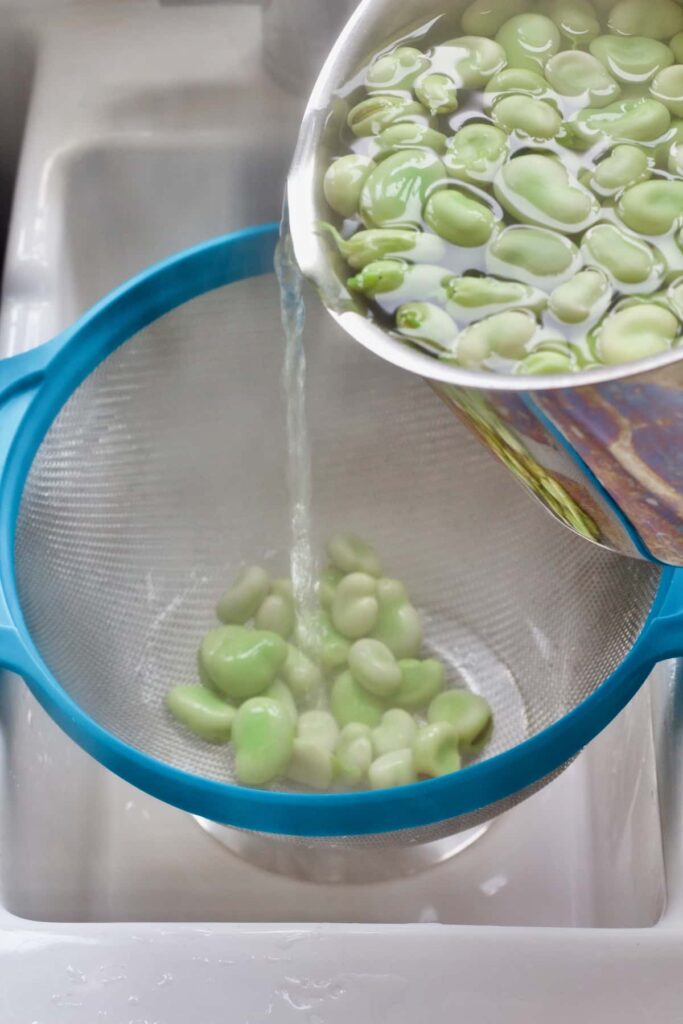
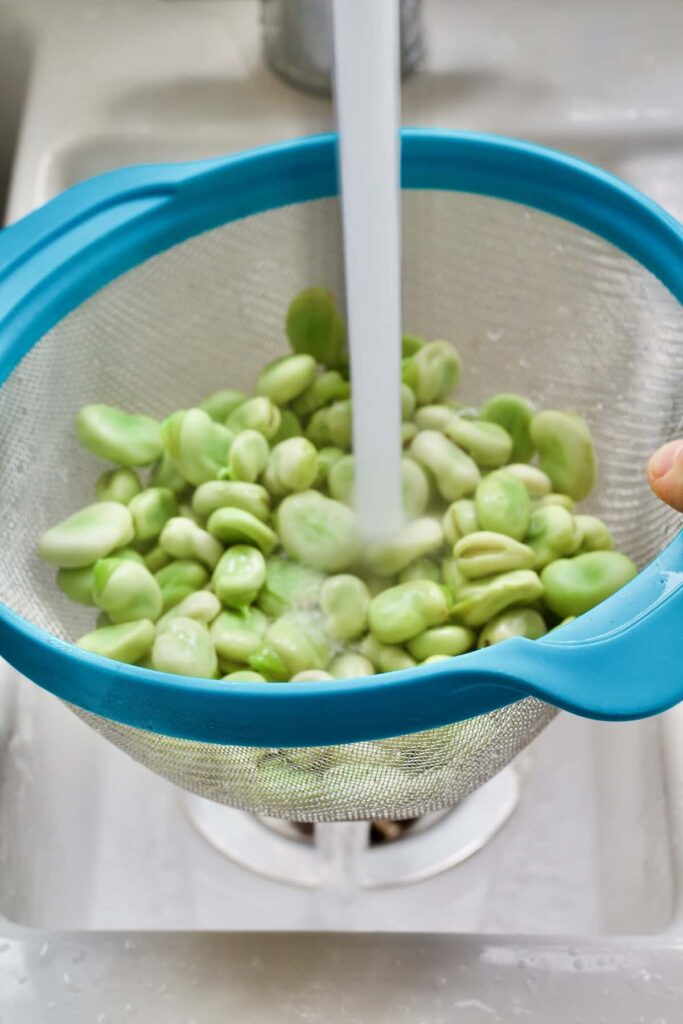
Five - Double pod the beans to reveal their bright green, super tender flesh. I find that the easiest way to do this is to make small incision with a knife at the top of the bean and gently squeeze it out (see pics below).
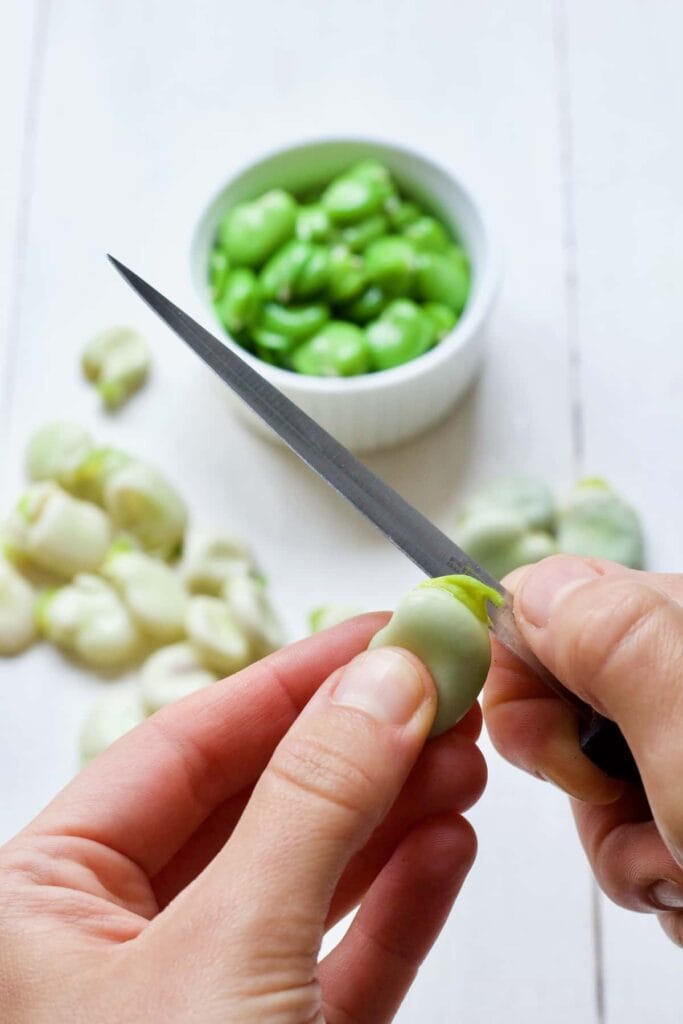
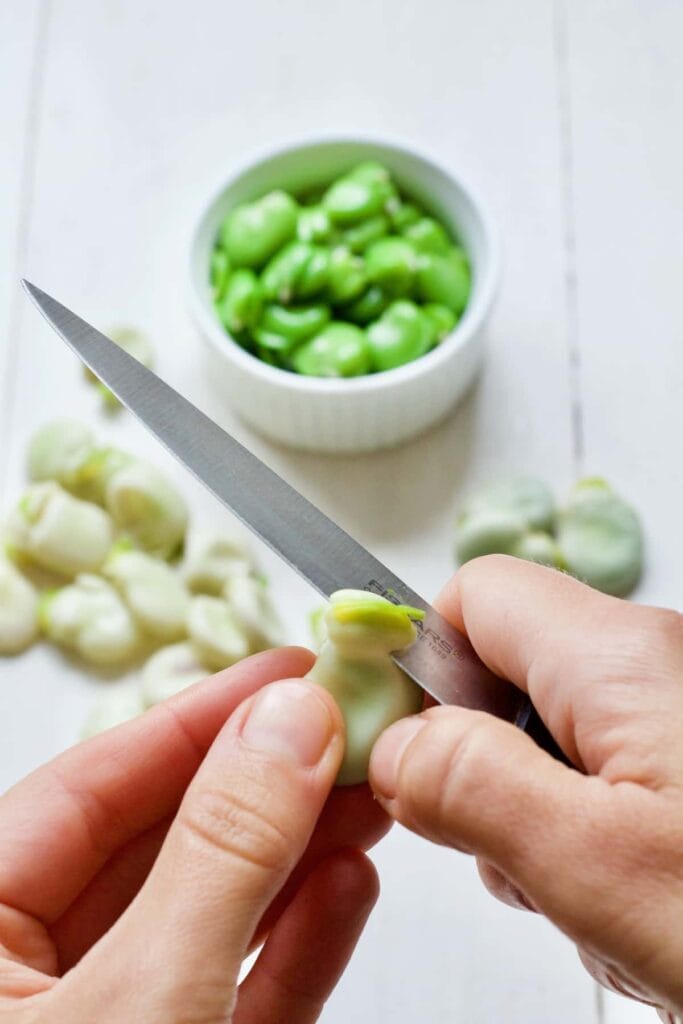

Six - Use as you see fit in your favourite broad bean recipe.
🍴Serving Suggestions
You can use broad beans (fava beans) in a wide range of recipes and also in a very similar way you would use peas.
Think vibrant green addition to salads like this Broad Bean Summer Salad, risottos, pasta dishes and soups.
Try adding them to my vegan potato salad for a bit of freshness and colour.
How about swapping peas for broad beans in this Spring Pea and Asparagus Risotto.
Use them in my Creamy Pasta Primavera or stir through this simple Roasted Tomato & Basil Pasta adding a touch of colour.
For pure broad bean indulgence this fresh and zesty Broad Bean Dip is an absolute flavour revelation.
My favourite way of serving them is as Broad Bean Bruschetta - so super simple yet so delicious. Summer on a plate!
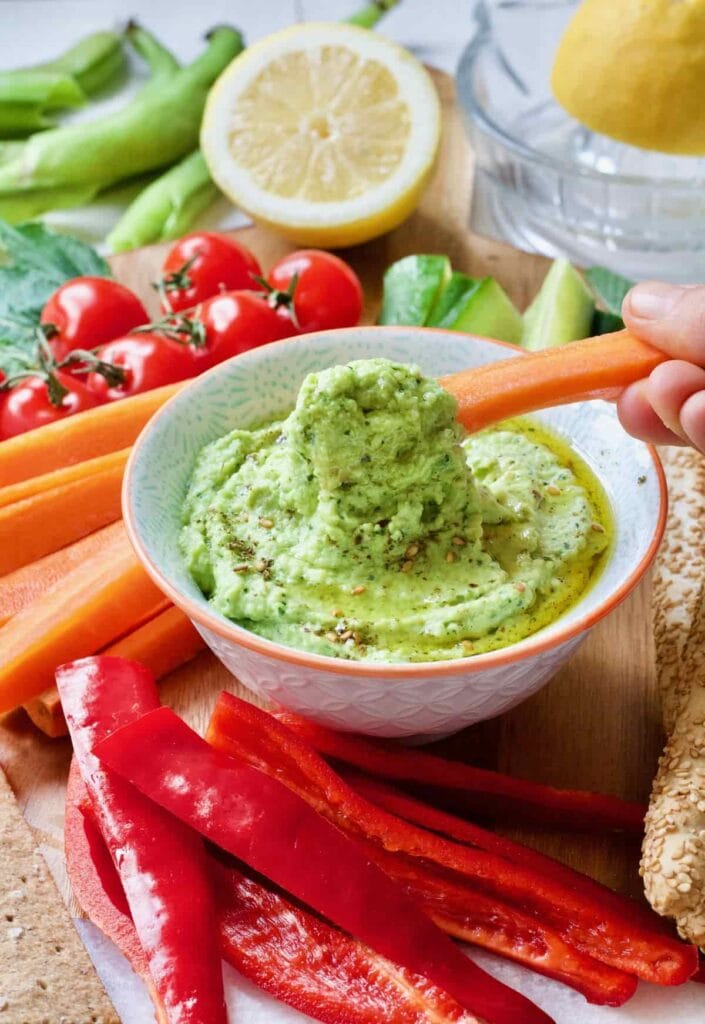
Have you found my How to Cook Broad Beans (Fava Beans) guide useful?
Please consider giving it ⭐️⭐️⭐️⭐️⭐️ rating in recipe card below.
📋 Recipe
How to Cook Broad Beans (Fava Beans)
Equipment
Instructions
- Prepare broad beans for cooking by shelling them (getting rid of the outer skin/shell/pod).
- Bring a medium pot of lightly salted water to a boil.
- Add shelled beans to boiling water and blanch for anything between 2-3 minutes max.
- Once the time is up, drain the beans and cool them immediately in icy water or under cold running tap.
- Double pod the beans by pinching them gently with your fingers to reveal their bright green, super tender flesh. Making small incision with a knife at the top of the bean will help. Discard the outer pods.
- Use as you see fit in your favourite broad bean recipe or as a simple side dish.
- Enjoy!
Video
Notes
- Nutritional guidelines are approximate, per serving based on 4 servings of plain cooked broad beans and should be treated as a rough guideline only.
- 1 kg fresh broad beans (fava beans) will yield you anything between 250- 300g (9-10.5oz) worth of beans. It's usually enough for 4 side dish servings or to add to salad, pasta or rice dishes.
- Cooked beans will keep in the fridge for 3-5 days.
- Freezer friendly (see "How to freeze broad beans" above)
- Don't attempt double podding broad beans before blanching them, it would take you forever. They almost slip out of their skins once blanched.
- Don't go over 3 minutes max cooking time or you'll have an absolute mush. Broad beans taste their best tender but with a slight bite to them.
- Don't skip cooling the beans straight after blanching them. This stops cooking process and preserves both colour and nutritional value.
- Don't skip double-podding, it really is game changer! The outer skin is not particularly palatable in my opinion and actually quite bitter too.
Nutrition

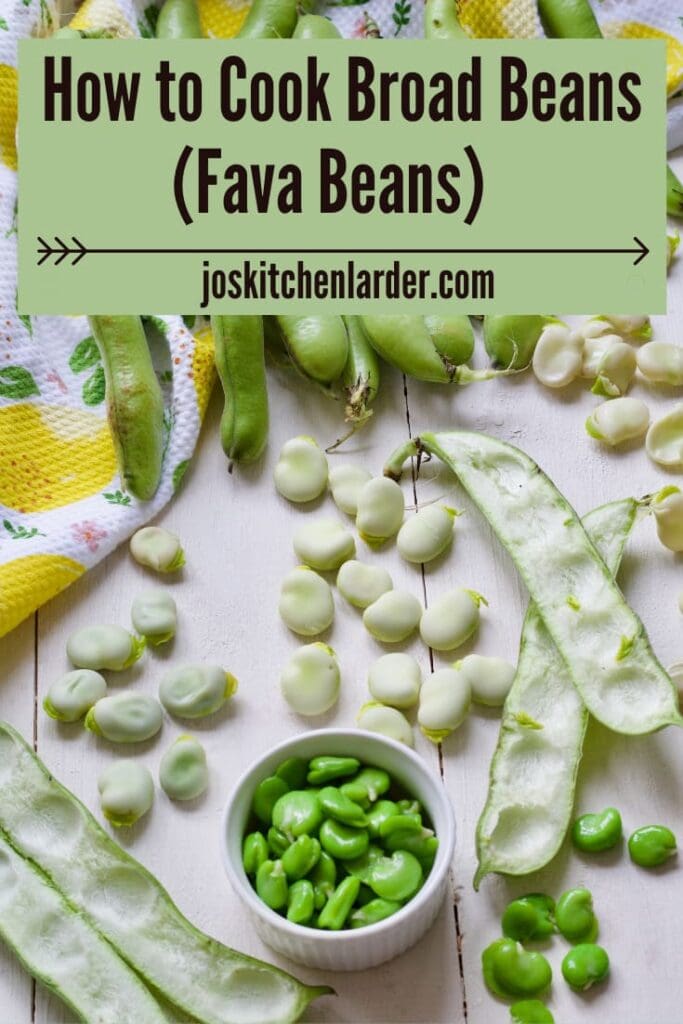
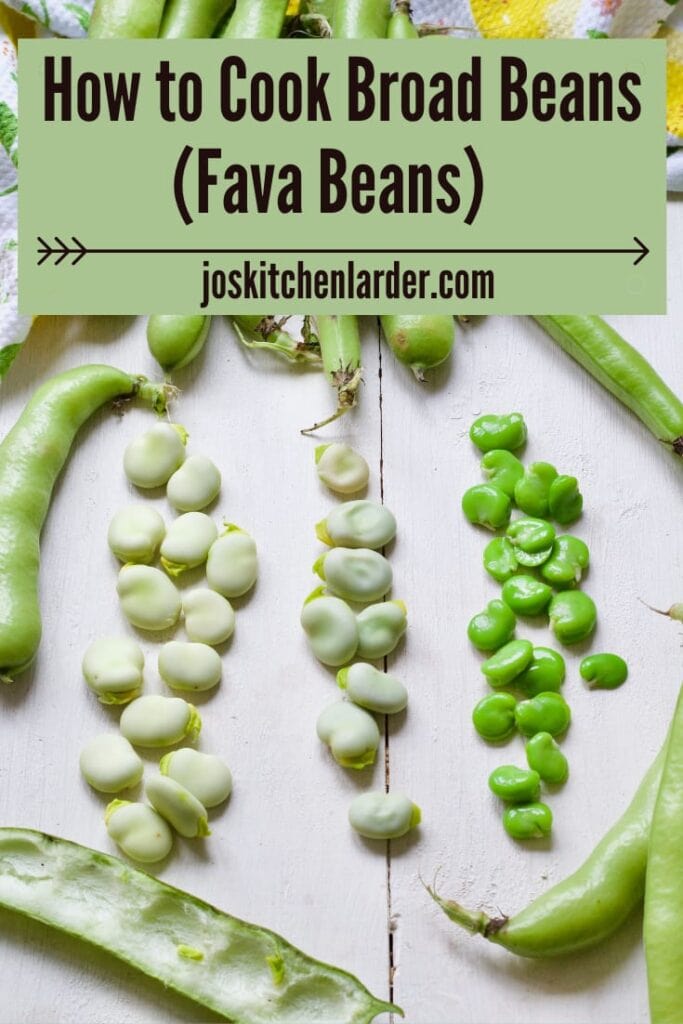
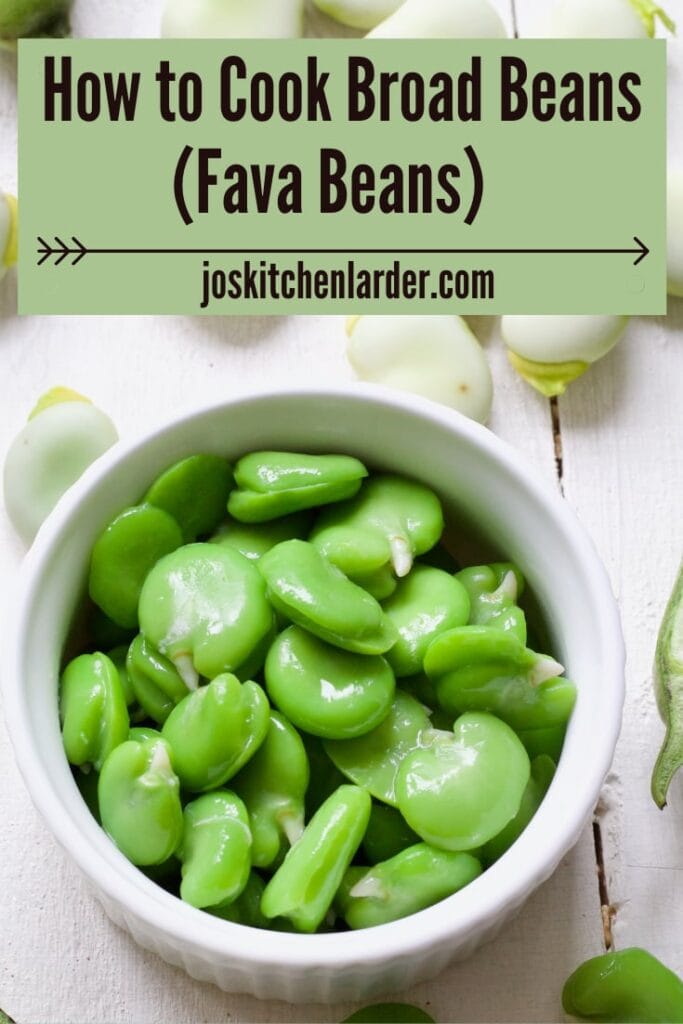
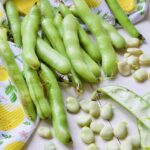

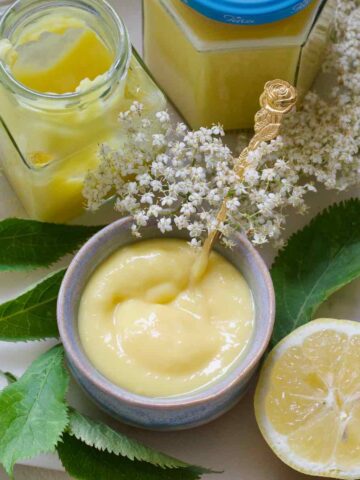
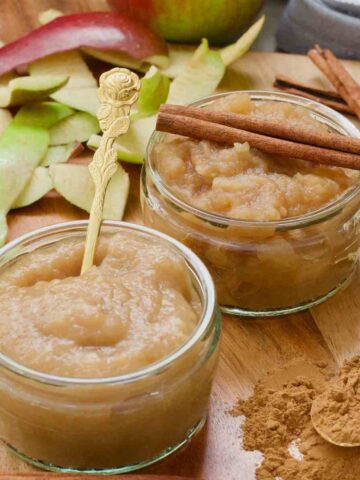
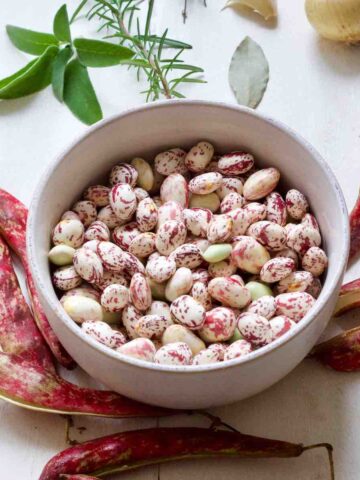
Janice McIndoe says
Discovering the uses for Fava beans as we are now planting them in our vegetable garden for the first time.
joskitchenlarder says
Hi Janice, I hope my little guide came handy.😊 Good luck with growing your broad beans!
Pauline San Diego says
My English recipe would be to add the cooked beans to white sauce, add butter and pepper then grated cheddar cheese if desired. I just love this and eat it by itself.
joskitchenlarder says
Sounds like a proper comfort food.🙂
Mike says
Beautiful post and photos. Apparently, some chefs are now using broad beans to make "guacamole" to avoid the extreme environmental cost that growing avocados causes. Cheers!
joskitchenlarder says
Hi Mike,
Thank you so much for your lovely comment! 🙂 I must say, as much as I love avocados I have cut down on their consumption quite drastically, keeping them now as an occasional treat. I think looking closer to home and eating more seasonally is definitely the way to go and broad bean "guacamole" sounds good to me and once they're back in season here in the UK I might give it a go. 🙂